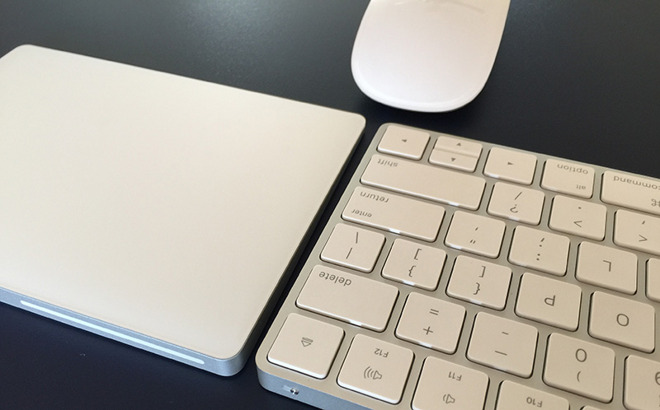Arun Maini, also known as the tech YouTuber Mrwhosetheboss, recently discovered a worrying trend. Maini was looking through his collection of more than 600 smartphones while preparing for a video about Samsung when he found that the battery on his Galaxy Note 8 had swelled up and split open the phone. Soon, he noticed the batteries in his Galaxy S6 and S10 had swelled as well.
Maini wasn’t alone. When he tweeted about the bulging batteries, he heard from several other reviewers that their Samsung phones were starting to swell, too. Maini published a YouTube video about his findings late last month, making a strong case that this was something that primarily affected Samsung phones. And after the video, he heard from even more people who’d found the same thing.
“It just seemed so bizarre,” Maini said in an interview with The Verge. “Each time I was like, ‘Okay, we’re about to film this video,’ I’d check the shelf and then another one is gone. It seemed ridiculous.”
This isn’t the first time Samsung has run into concerning battery issues. Samsung infamously pulled the plug on its Galaxy Note 7 after repeated incidents showed batteries in the phones would sometimes catch fire. So is this the precursor to another incident? Experts tell The Verge that old, swollen batteries aren’t necessarily unexpected — but that doesn’t mean they’re safe.
Maini’s current tally of affected phones is eight, he said. All are Samsung phones. None are from other manufacturers. Yes, that does mean that only 1 percent of his total phone collection is affected. But when billions of people are carrying around smartphones in their pockets every single day, any possibility that one particular family of phones might have significant battery issues down the line is worrying.
How the phones are stored doesn’t seem to be the issue. Maini keeps all of his phones on shelves held in place by special 3D-printed clips to let the phones stand upright. He doesn’t have a thermometer in the room, though Maini estimates that the temperature is generally about 22 degrees Celsius (or a bit over 71 degrees Fahrenheit). But he’s not sure temperature correlates to swelling. “There were even people who were storing them in cold garages who were tweeting me, so I don’t think it’s completely a temperature thing,” he said.
Batteries might be swelling because they’re just sitting there dormant
Instead, one possibility is that the phones are swelling because they just sit there. Maini told me that when he’s done using a phone, he’ll typically just put it on the shelf and let the battery drain naturally, though some phones will occasionally be used down the line for other videos. Just letting a phone die is probably similar to what most people do when they’re done with a phone, too, but instead of a nice shelf, you might just shove the phone in a drawer, well out of sight.
Swelling happens when the electrolyte material in the batteries, which is usually a liquid, begins to break down and then turn into a gas, Arthur Shi, senior technical writer at iFixit, said in an interview. “With lithium ion batteries, if you discharge [them] down where [they’re] almost completely devoid of energy, it will damage the battery,” he said.
iFixit has seen swelling across lots of phones, Samsung and Apple phones included, Shi said, and it would take a lot of work to figure out why this is seemingly happening to more Samsung phones. (Just look at the “spicy pillows” subreddit to see that swollen batteries can be found on all sorts of devices.) iPhone batteries tend to swell less, and older iPhones have significantly smaller capacity batteries than Samsung batteries, according to Shi. Capacity “also plays into how much a battery will swell,” he said. “Now iPhone batteries are getting bigger and bigger, so we’ll see how that goes.”
The issue could also be caused by manufacturing defects, said Kelsey Hatzell, an assistant professor of mechanical and aerospace engineering at Princeton University. “When you have a metal component come in contact with a material that’s inside the battery and any sort of metal residue gets transferred into your battery during the manufacturing process, that is known to cause most or a significant number of battery failure mechanisms,” she said in an interview. “I would anticipate that it’s something to do with the manufacturers of wherever they’re getting their batteries from.”
“The swelling itself is not inherently dangerous.”
Samsung is “aware of this matter” and is “looking into further technical assessments,” Samsung spokesperson Chris Langlois told The Verge. “We encourage customers with questions regarding their Samsung device to contact their local Customer Service representative.”
If you do see that a phone’s battery is swelling, don’t panic, despite the very legitimate fears you may have after reading about the Note 7 fiasco. “The swelling itself is not inherently dangerous” and is a safety mechanism to contain the volatile gasses, Shi said. Batteries actually swell mildly every time you charge them, and the phone manufacturers have built specific tolerances into the battery wells to account for that, according to Shi.
What can be dangerous is if you try to charge a battery that has gotten to the point where you can see it swelling. “As you charge it, it will cause the electrolyte to break down even more,” Shi said. Then the battery may swell up more and eventually might rupture, and “the heat from the battery damage might cause a thermal event.”
Instead, both Hatzell and Shi recommend disposing of the swollen batteries safely, and you can find locations to do so with resources like Call2Recycle. And while these swelling batteries may still be alarming, batteries are still, on the whole, pretty safe, Hatzell said. “I know this story is about the gassing or the volume expansion, but I think there’s lots of equally significant observations that suggest batteries are actually safer than we think when they’re manufactured appropriately and operated correctly.”










